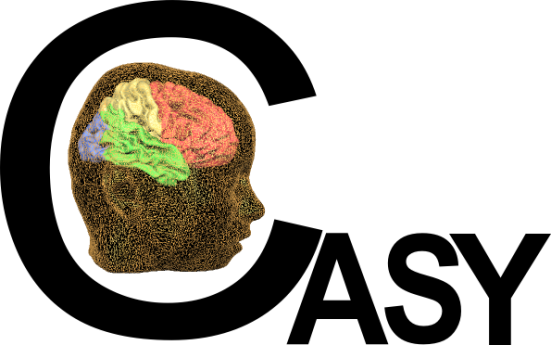 |
Cognitive Assistive Systems |
|
| General Information | Research Topics | Scholarship Application |
Find more information at the application page.
Spokespersons for the DAAD PhD Programme CASY and the associated PhD Programme CINACS
Prof. Dr. Stefan Wermter (CASY)
Head of Knowledge Technology
University of Hamburg, Department of Informatics
Prof. Dr. Jianwei Zhang (CINACS)
Head of Technical Aspects of Multimodal Systems
University of Hamburg, Department of Informatics
Description
The programme “Cognitive Assistive Systems (CASY)” will contribute to the focus on
the next generation of human-centred systems for human-computer and human-robot collaboration. A central need of these
systems is a high level of robustness and increased adaptivity to be able to act more natural under uncertain conditions.
To address this need, research will focus on cognitively motivated multi-modal integration and human-robot interaction.
Modalities from sensors and processed representational modalities will be combined in multi-modal perception or
communication models and will be evaluated for their use in assistive systems based on computational, statistical, neural or hybrid approaches.
Aims and Objectives
| Key to human and machine intelligence and behaviour is learning and memory. Based on frequent interactions between users and the real world, incrementally diverse skills can be acquired from users and be integrated to support intelligent cooperation. However, to collaborate effectively with a computer, mobile device or intelligent robot, next generation human-centred systems for human-computer and human-robot collaboration need to be more robust, more adaptive, more predictive and acting more natural under uncertain conditions. This aim is key to acceptance by users and for an intuitive collaboration between humans and cognitive assistive systems. |
The research questions to be addressed include:
- Which role does multi-modality play in human-computer and human-robot interaction?
- How can the principles of cross-modal interaction observed in natural systems be implemented in artificial systems?
- How is cross-modal information integrated to support robust decision making?
- Which codes does the brain use to allow communication across different modalities and systems?
- How does multi-sensory learning and alignment adapt and change in the long run?
- How are the principles of cross-modal interaction at perceptual level related to principles of cross-modal interaction and integration of higher cognitive functions like language processing and image understanding?
- How can human-computer and human-robot interaction be enhanced with rapid response capabilities to provide immediate confirming or corrective feedback?
Associated Programs
 |
CASY is associated with the international PhD research training group Cinacs. |